After six years of living just steps from the Andes foothills in Chile, I find I’m missing nature. My suburban Bangkok neighborhood is leafy enough, and I can walk along the canals to get away from the hustle and bustle. It’s surprisingly quiet and peaceful. As our semester break approached, though, I knew what I needed. I booked the “Explorer Lake Trip” package in Khao Sok National Park, which included two nights in a treehouse in the jungle and two nights in a raft house at the Cheow Lan Lake.

On Dec. 18, we arrived at Our Jungle House, an eco resort in the national park, where the lady at reception took one look at us and suggested we rethink our plan to go rafting with a cave exploration. Instead, she said, we should go tubing. Which we did. However, the river was quite low and slow, so we had to paddle the whole time to keep up the with guide, who had taken off his flip flops to use as oars. Yes, it was nice to be out in nature, but it also felt like a consolation prize.
Tony and I have trekked in jungles around the world: Costa Rica, Bolivia, Borneo, and many times in Thailand, to name a few. We really didn’t need a guide, even though that’s generally my jam. Unfortunately, our “explorer” package came with a guided tour, and the guide never showed up. By the time our eco resort found another guide, we were way behind schedule. We were joined by a mom and her two grown kids from the UK, who were way more excited than Tony and I were to pause at every sign of a tarantula burrow or an unusual leaf that curled when you touched it. Been there, done that.
I felt so jaded during the whole hike. Really, I just wanted to keep moving and enjoy the Seusstastic landscape of wildly tangled vines, unbelievably huge leaves, the occasional rustle (monkey? monitor lizard?), and the woop-woop call of gibbons. At one point, we came to a lovely waterhole fed by a rushing stream, and the others stripped off their hiking gear to take a dip in their swimsuits. Nobody had informed us that we might be swimming, so we were unprepared. Being unprepared makes me cranky.
I tried to brush off my irritability to appreciate the jungle. I couldn’t get enough of the fig trees’ wild root systems and the towering bamboo arches that created a tunnel along parts of the trail. At the waterhole, we spotted a 5-foot-long monitor lizard (so maybe I wasn’t too sad about not swimming). Our guide pointed out a pit viper sleeping high in a tree, which got him talking about different types of snakes. He said the most venomous snake in the region was the king cobra. “He bite you, one minute bye-bye!” he said with a laugh.
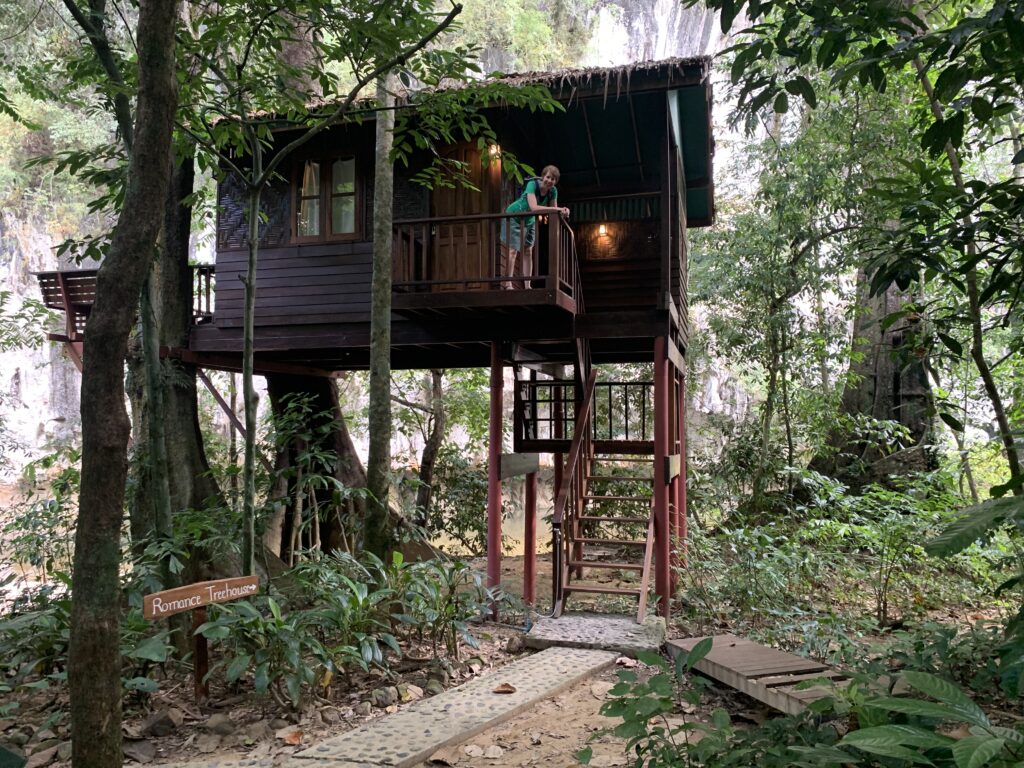
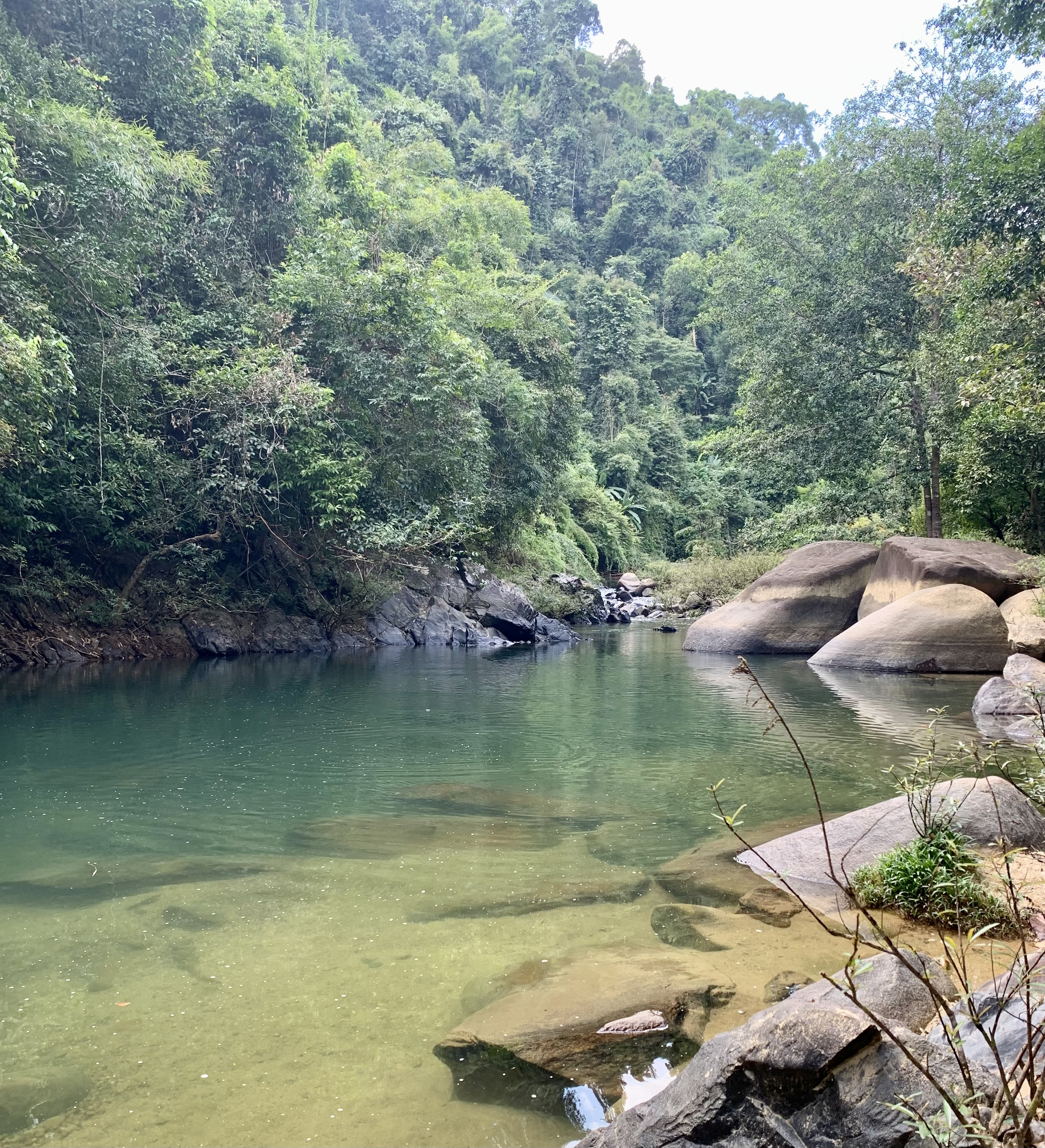
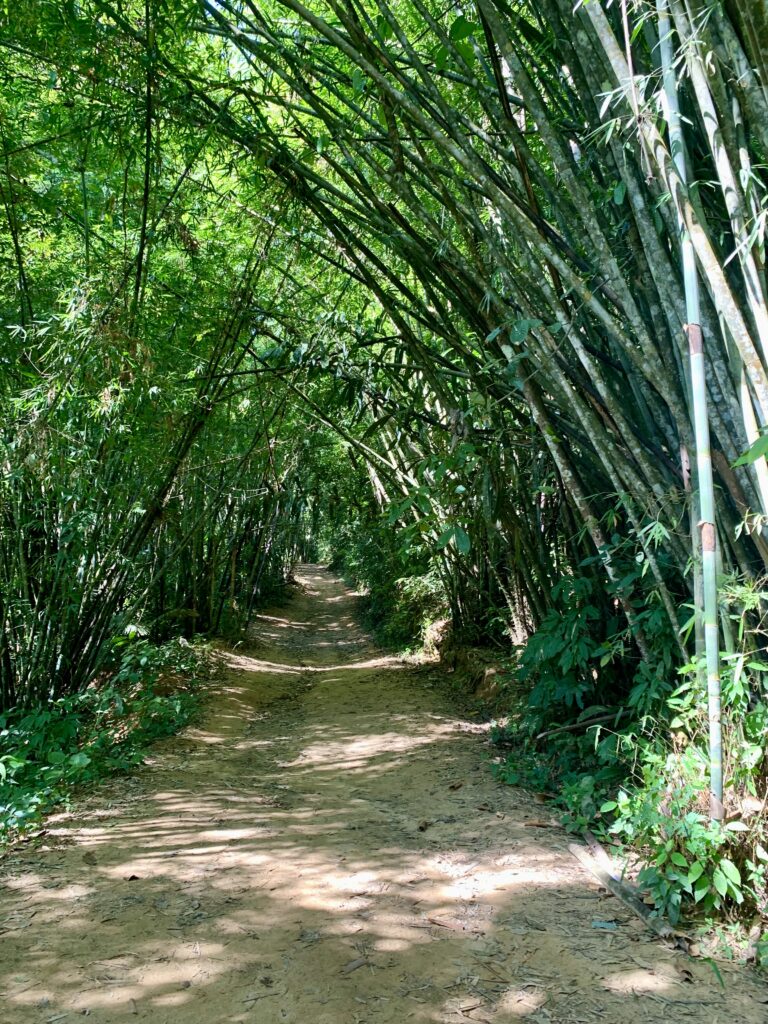
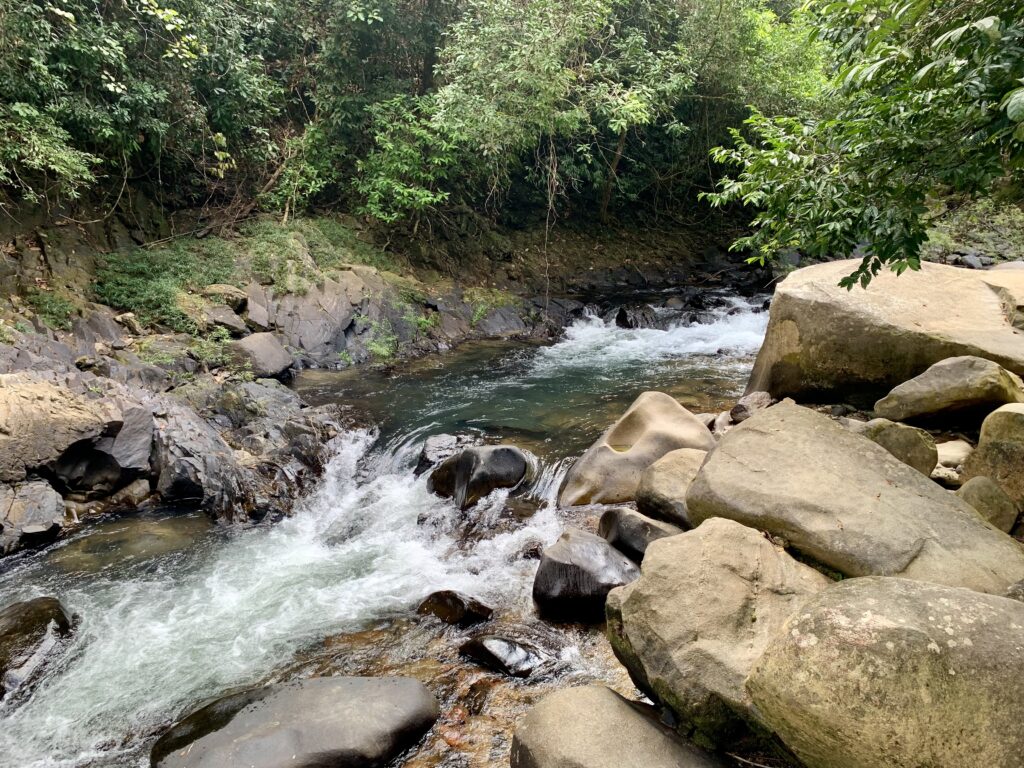
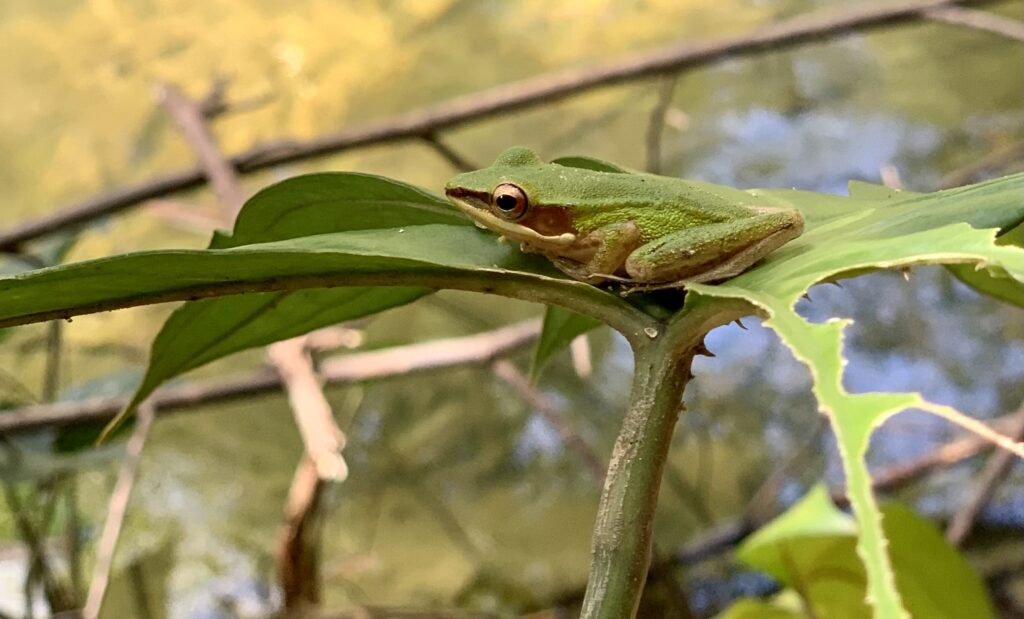
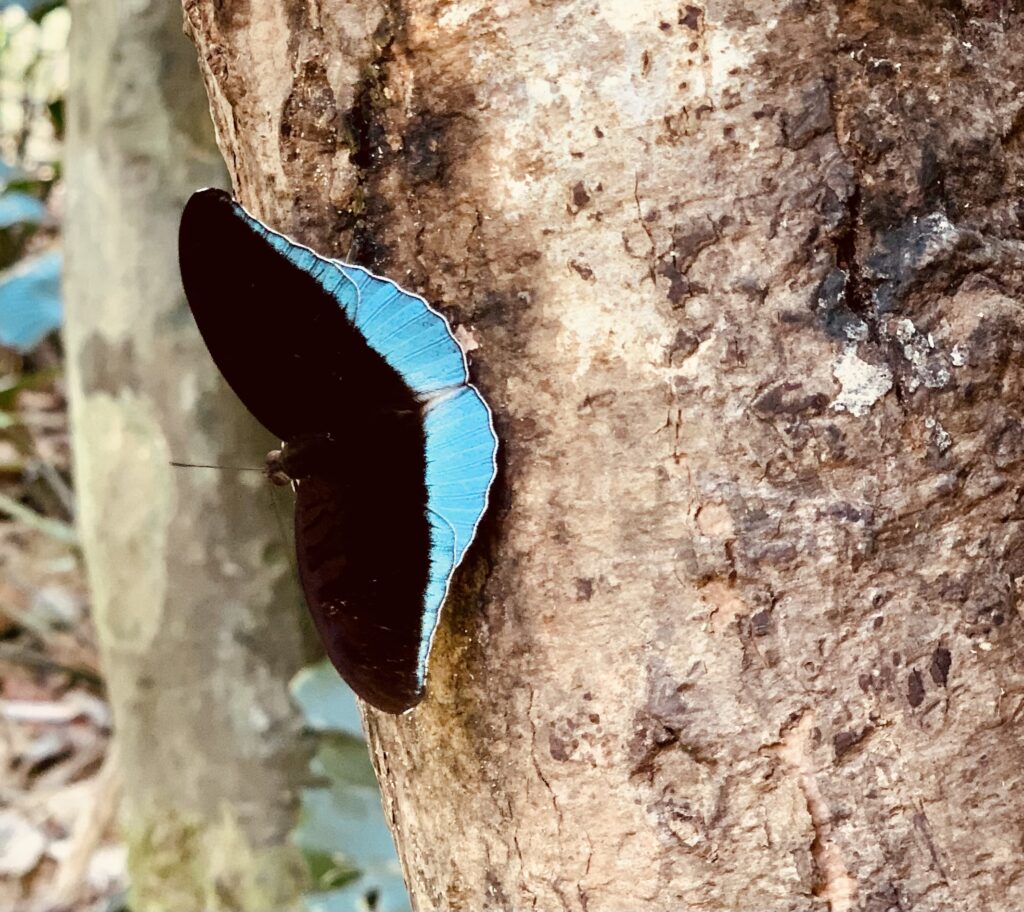
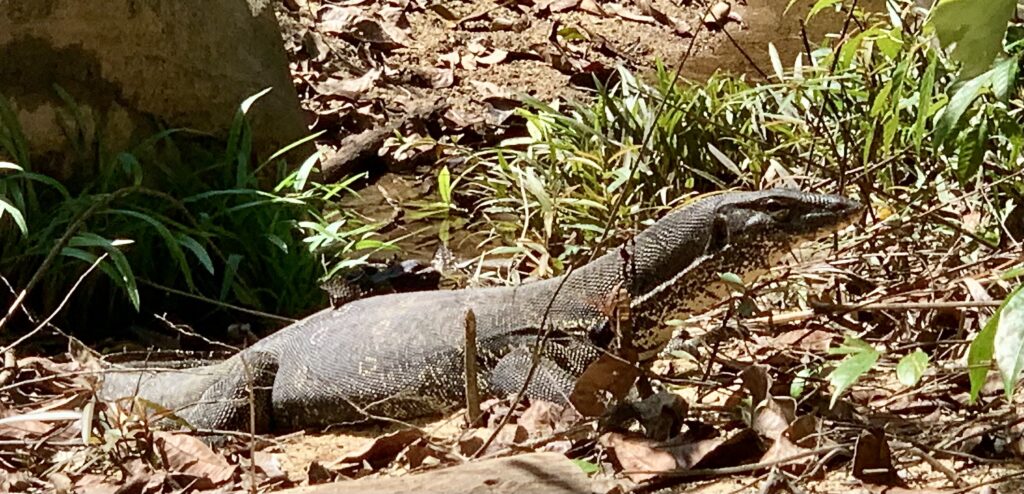
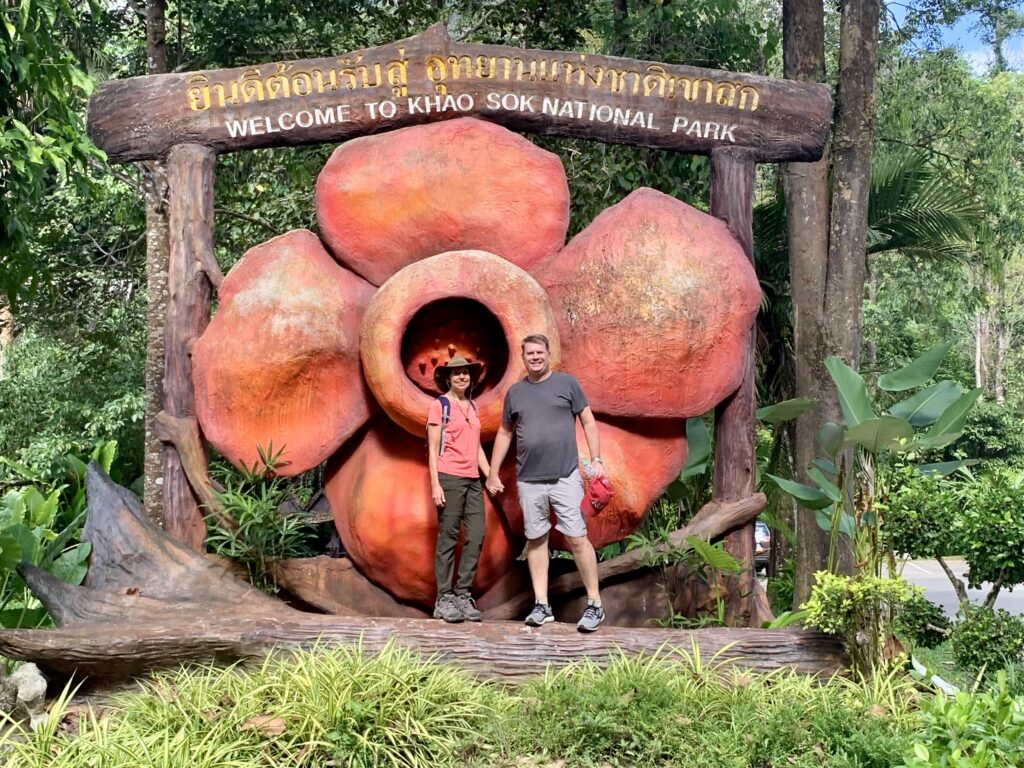
Because of our late start, we returned to the eco resort with just barely enough time to wolf down some lunch before our scheduled “elephant experience.” Despite living and traveling in Asia for so many years, we’ve never had a first-hand encounter with elephants.
Although many tourists still hope for a photo opp atop an elephant, a friend in India helped me understand the cruelty and abuse elephants suffer in order to be domesticated. I knew I didn’t want to contribute to that type of tourism. Instead, we visited the Khaosok Elephant Conservation Centre, which is committed to elephant welfare. This article from the Travel & Leisure website explains why you shouldn’t ever ride an elephant.
At the conservation center, the guide, Chalee, explained that elephants had been used in Thailand since ancient times when they were trained to carry soldiers into battle. Later, the logging industry took advantage of their size and strength, and of course, tourists eagerly pay to interact with and ride an elephant. As welfare organizations have worked to raise awareness, tourists can now find more opportunities for an ethical encounter with Thailand’s national animal.
All of the elephants at the conservation center had been in the family for generations but were now retired from any type of labor or service, Chalee said. We were assigned to Boonsong, an elderly elephant they called “the grandmother.”
During our visit, Boonsong was never tied up or controlled with a sharp hook as I’ve seen in other places, including India. Her handler, called a mahout, simply called out commands. I realize that she was most likely abused in her training at some point to behave so compliantly, which is heartbreaking, but I want to believe her life now is all about indulgence and peace.
Our first task involved mashing up bananas and powdered elephant food to make a cookie dough-ish paste that we rolled into balls. Then we fed the balls, along with some mini bananas and pineapple, to our elephant. Chalee had demonstrated how we could hand off the food to Boonsong’s trunk, or we could put it directly into her mouth.
After her snack, we walked with Boonsong to a mud pit. Chalee noted that elephants love mud because it acts as a natural coolant. Elephants can only sweat from their feet near the toenails, she said. Their big, flapping ears serve as another cooling method in Thailand’s tropical heat.
Tony and I climbed into the mud pit with Boonsong and her mahout. We used a coconut shell to scoop mud from the floor, and then we rubbed mud all over the elephant’s body. I had expected her skin to feel leathery, but I was surprised at how thick and rigid it was. However, Chalee pointed out that elephants are very sensitive to touch and can detect insects or changes in temperature. She encouraged us to stroke, but not to slap, as we applied the mud.
From the mud pit, Boonsong walked to a huge shower, where her mahout washed off most of the mud before leading her to the river for her full-body scrub. We splashed into the river with stiff brushes and coconut buckets, scouring her legs and lower body. When the mahout gave the signal, she dropped down to her knees so we could wash her upper half. Elephants here are prone to illness caused by a biting fly that deposits its egg in the wound, which is one reason a daily bath helps to keep the elephants healthy.
Stepping from the river, squeaky clean, Boonsong immediately used her trunk to blow sand over her body, the equivalent of applying insect repellent and sunscreen.
Overall, the experience was a bit contrived, but I didn’t care. When I try to describe how it felt to spend time with Boonsong, I can only think of cliches: She was majestic, gentle, intelligent, and endearing.
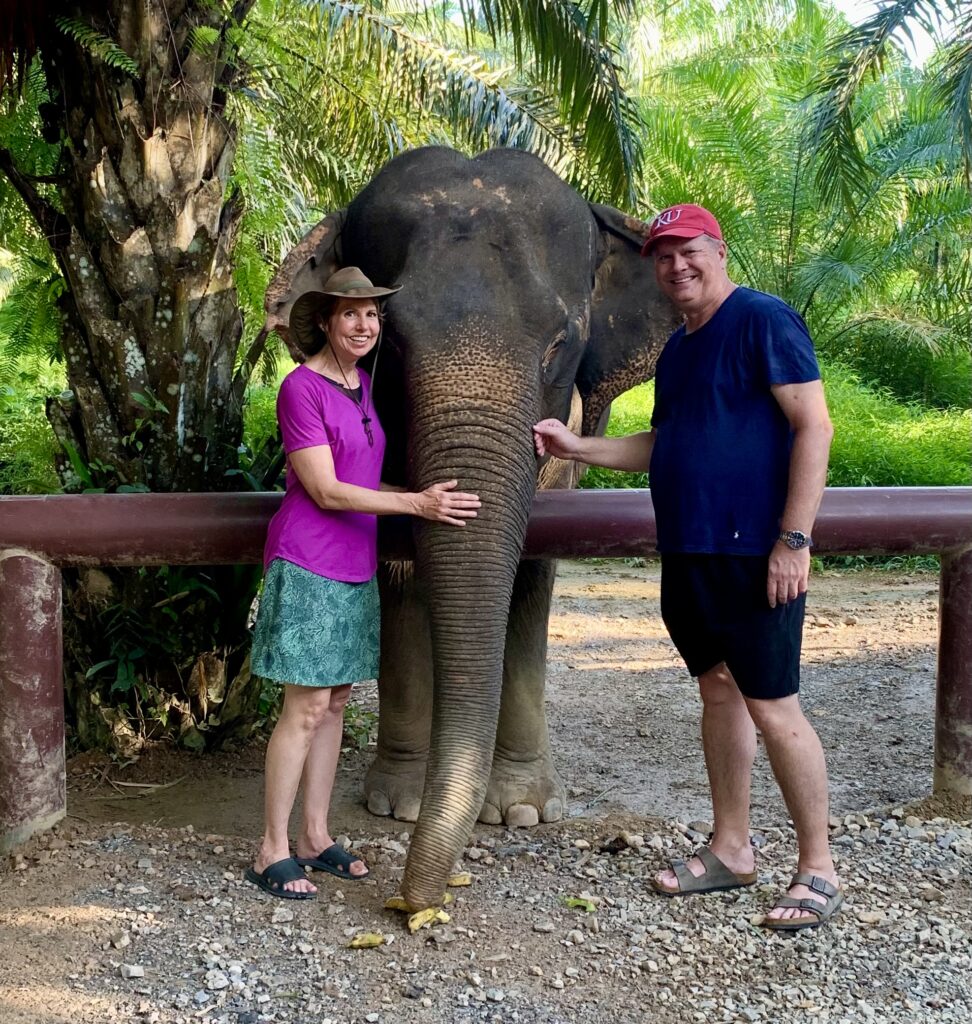
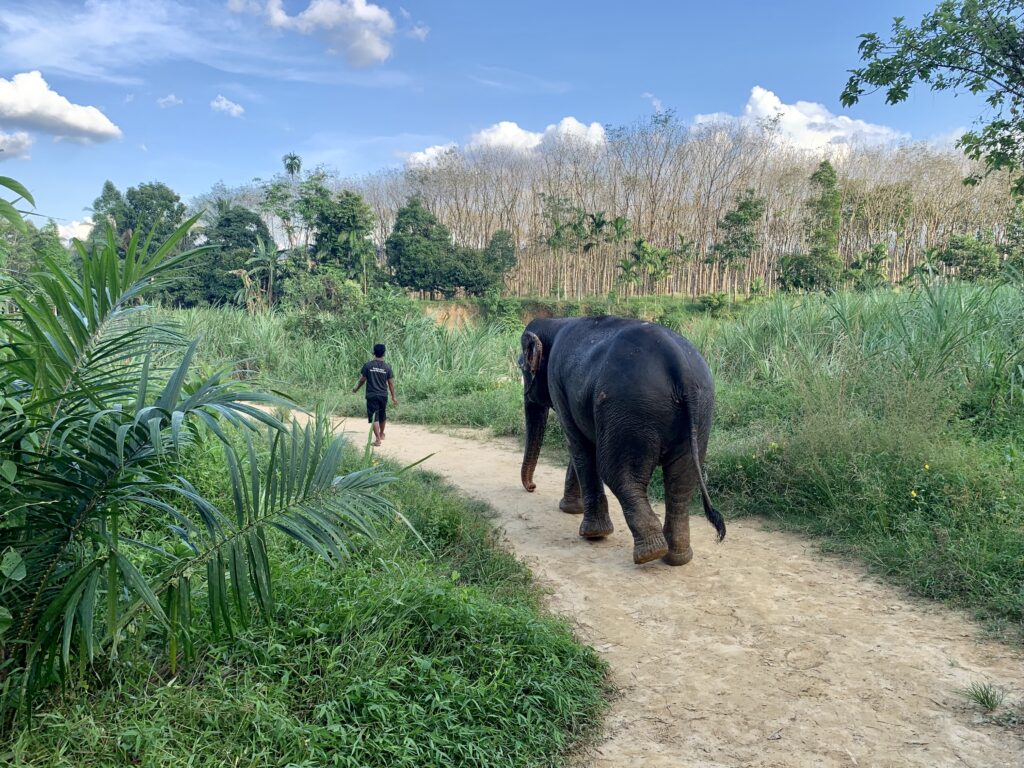
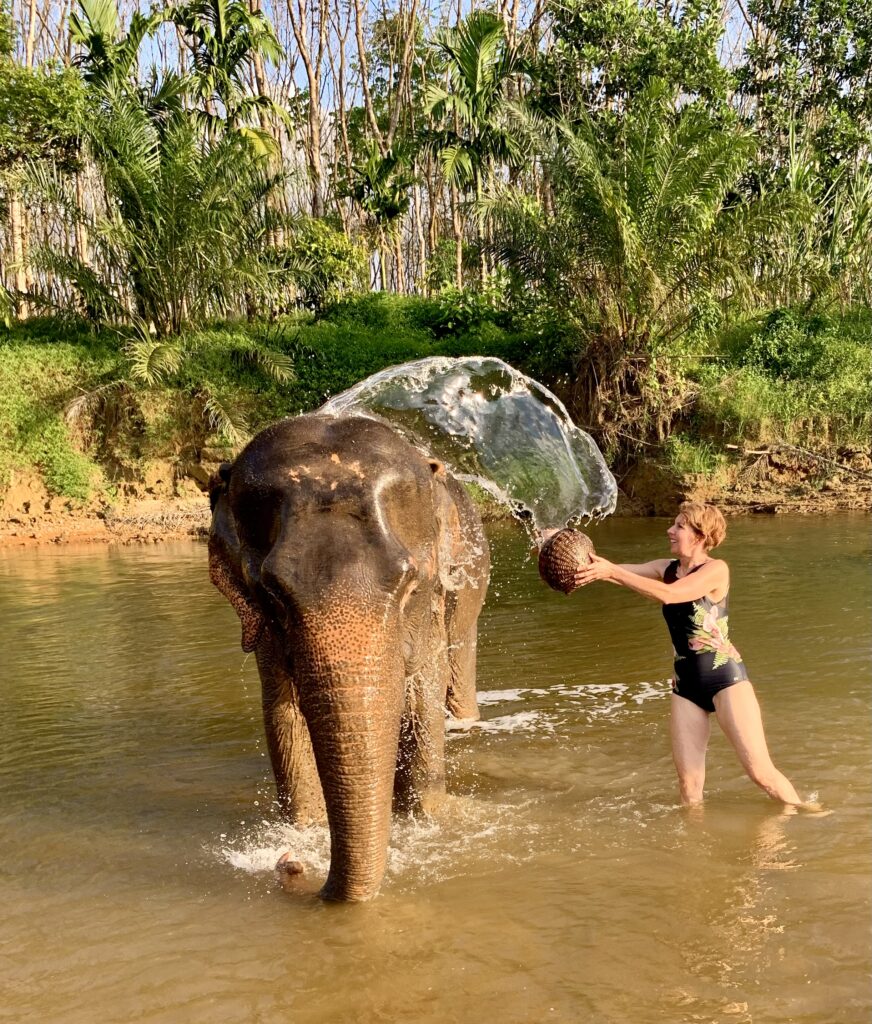
Although the jungle wasn’t exactly meeting my nature needs, my first elephant encounter was everything I hoped it would be.
